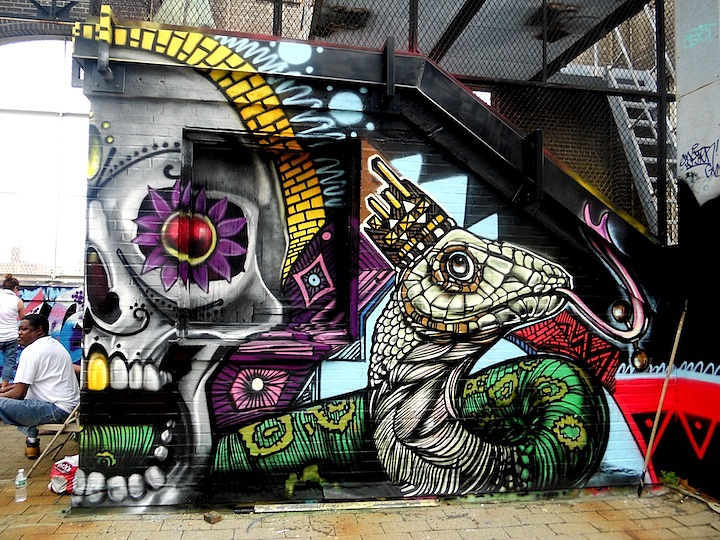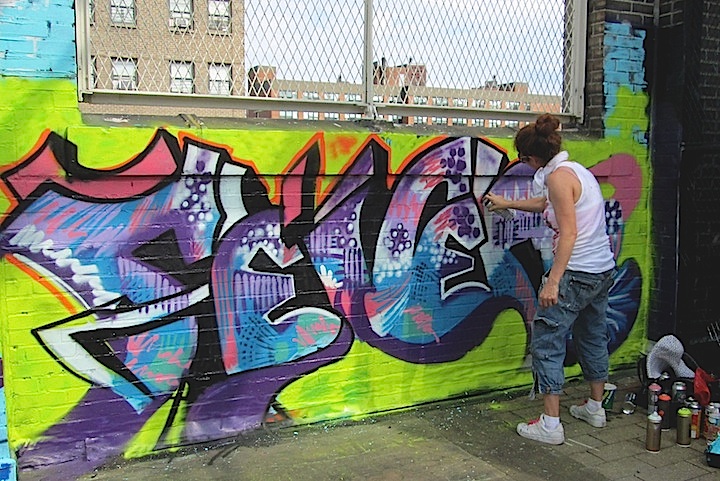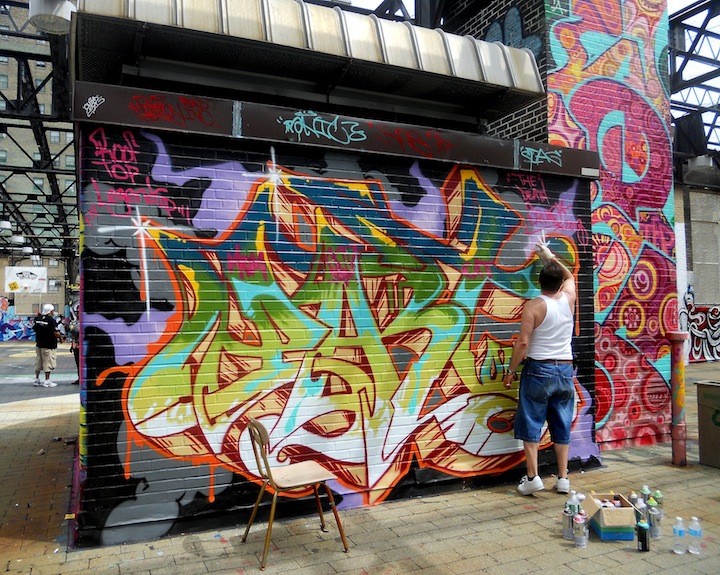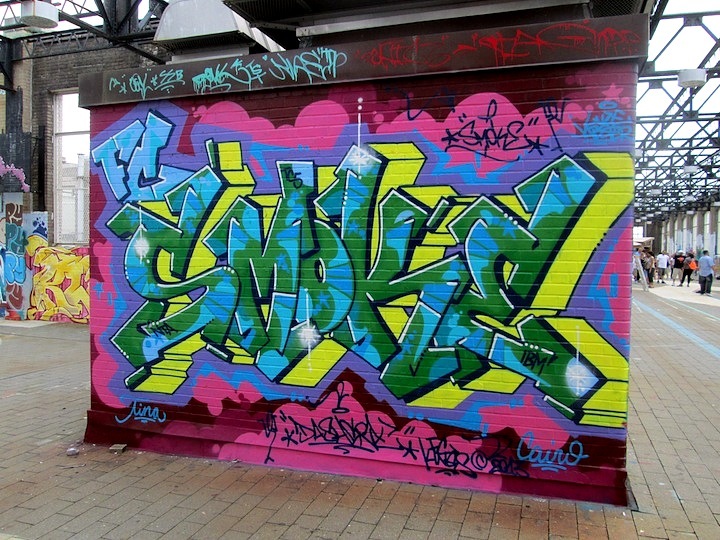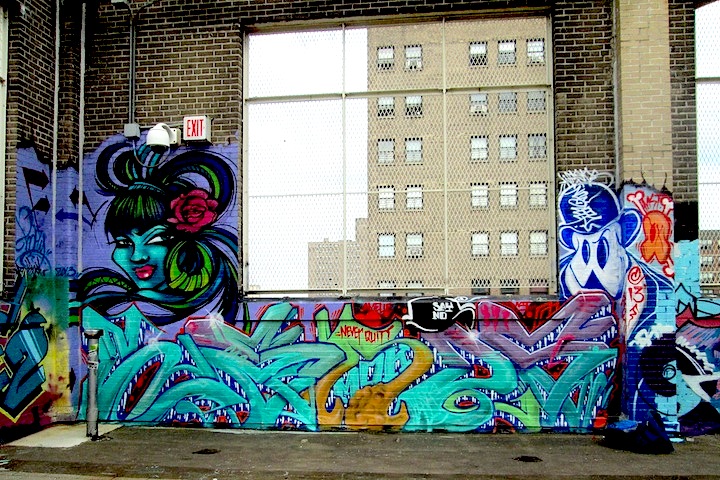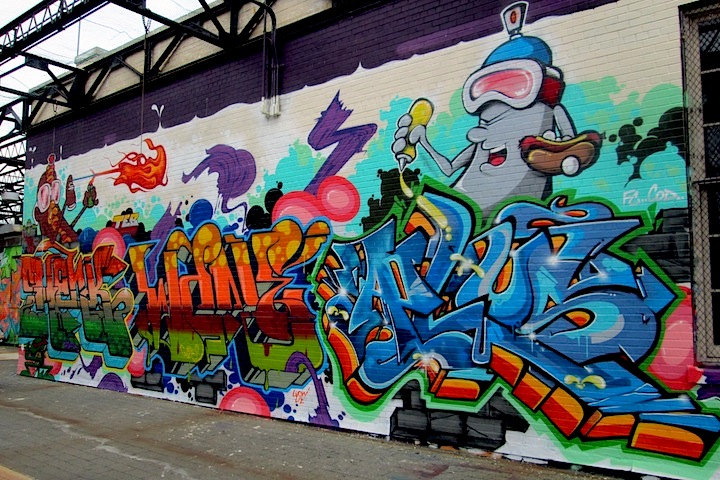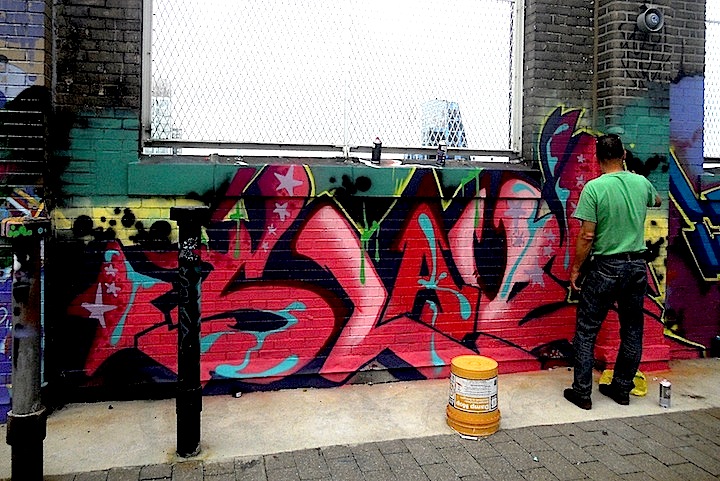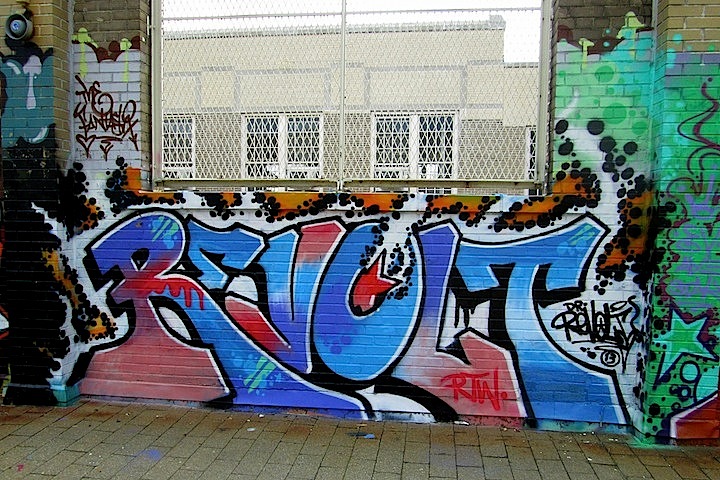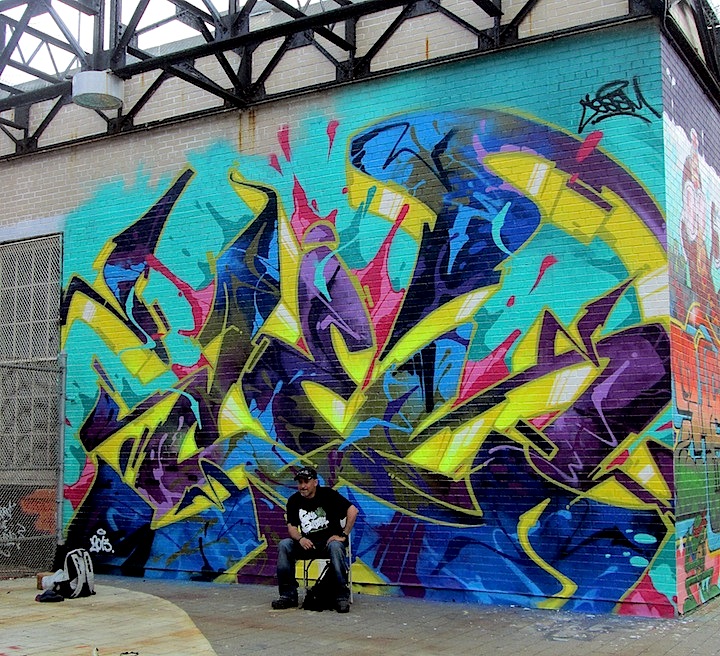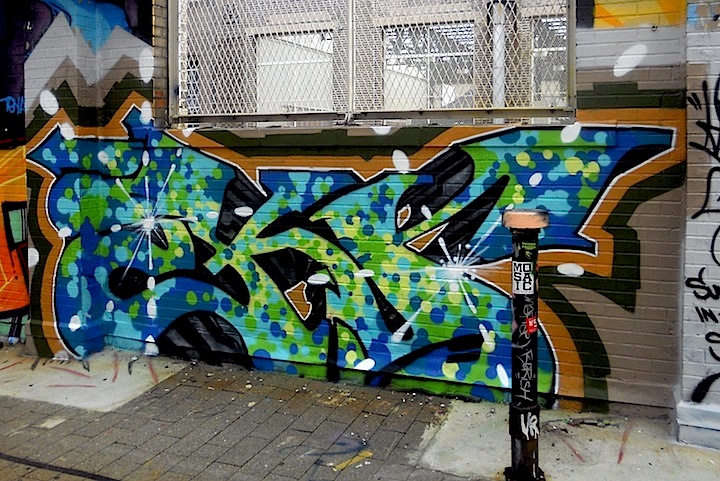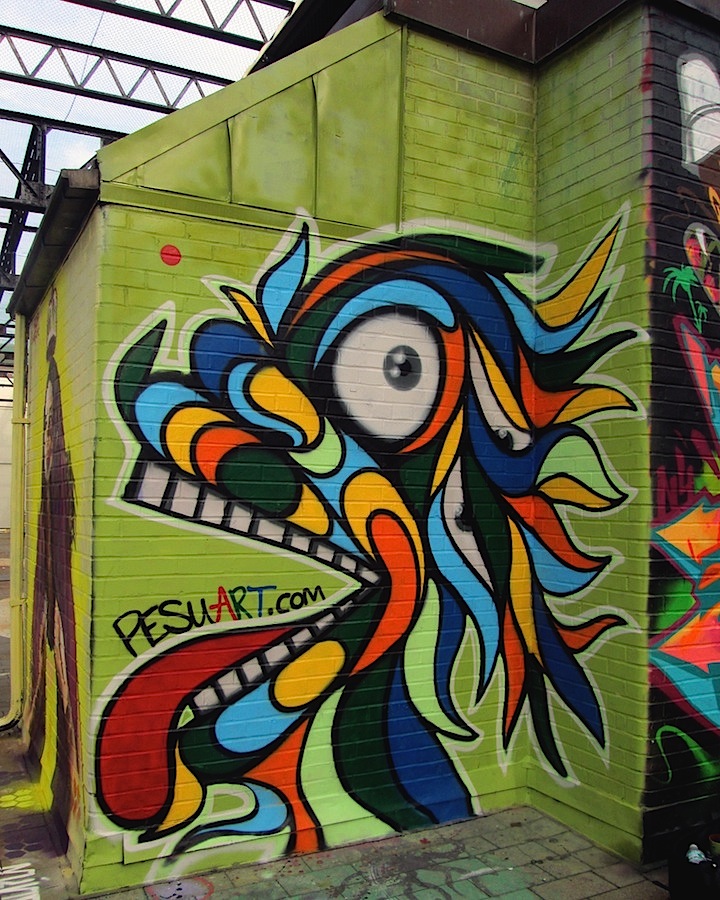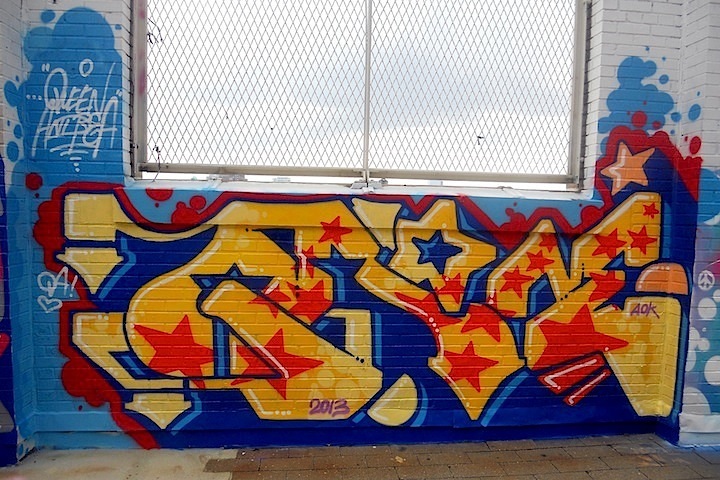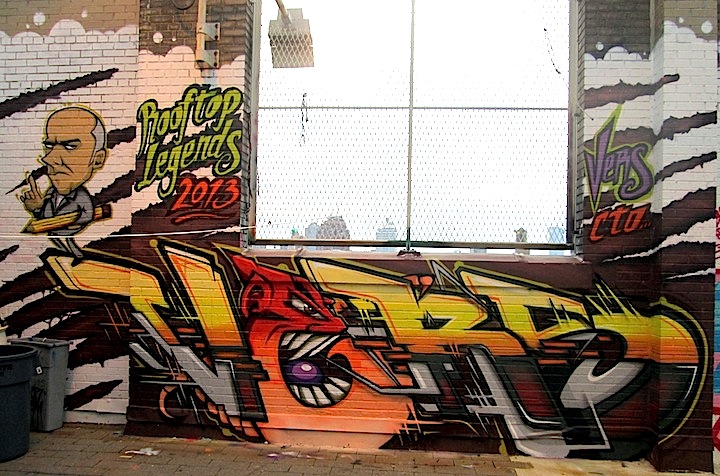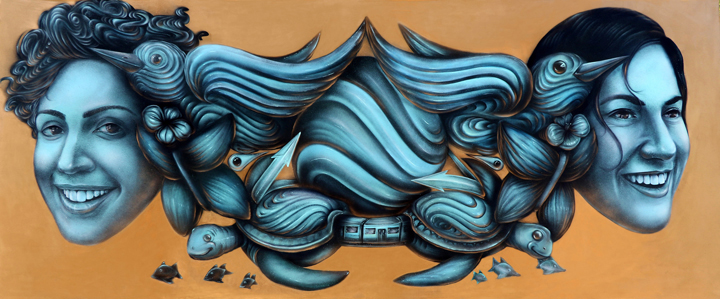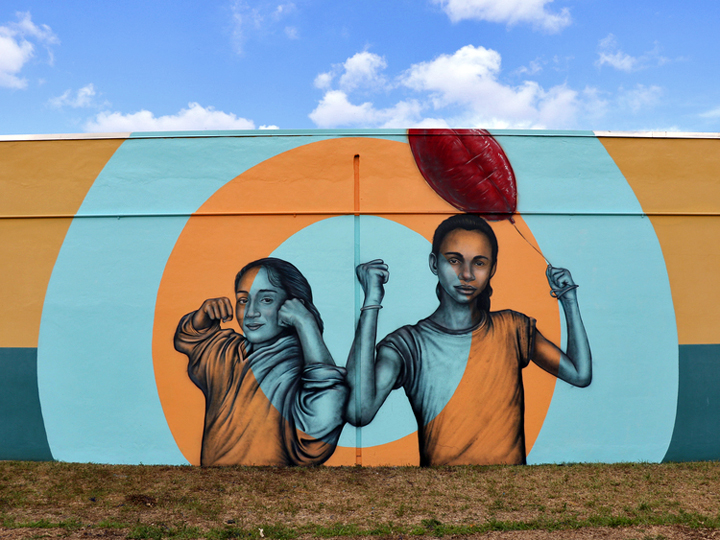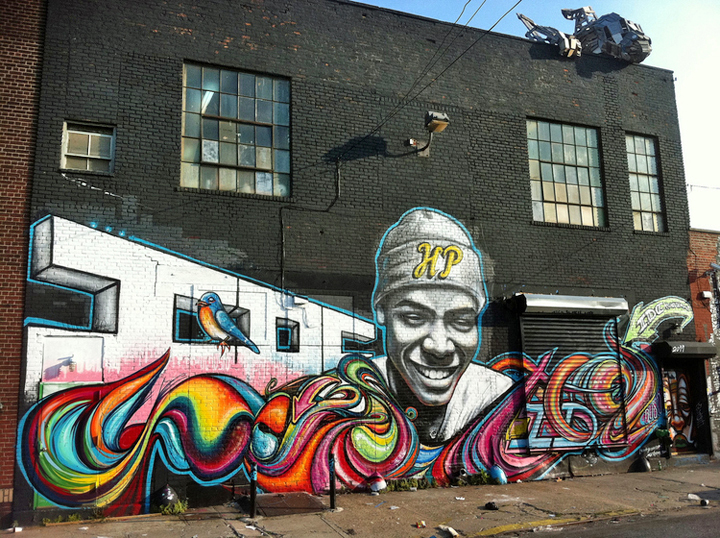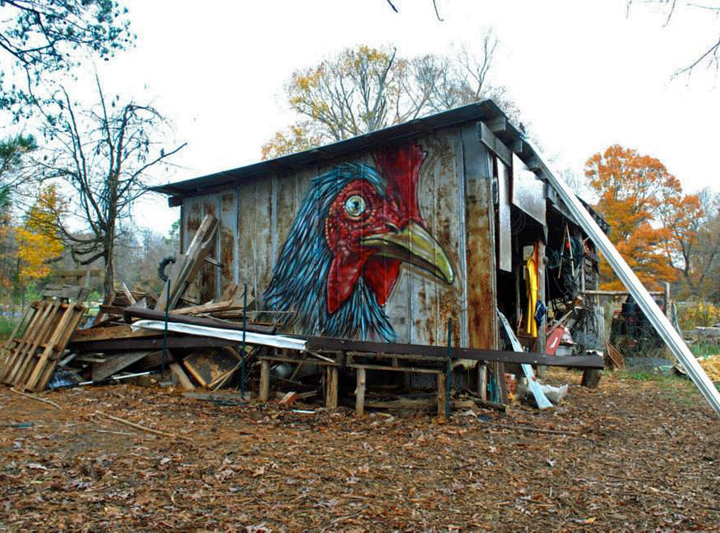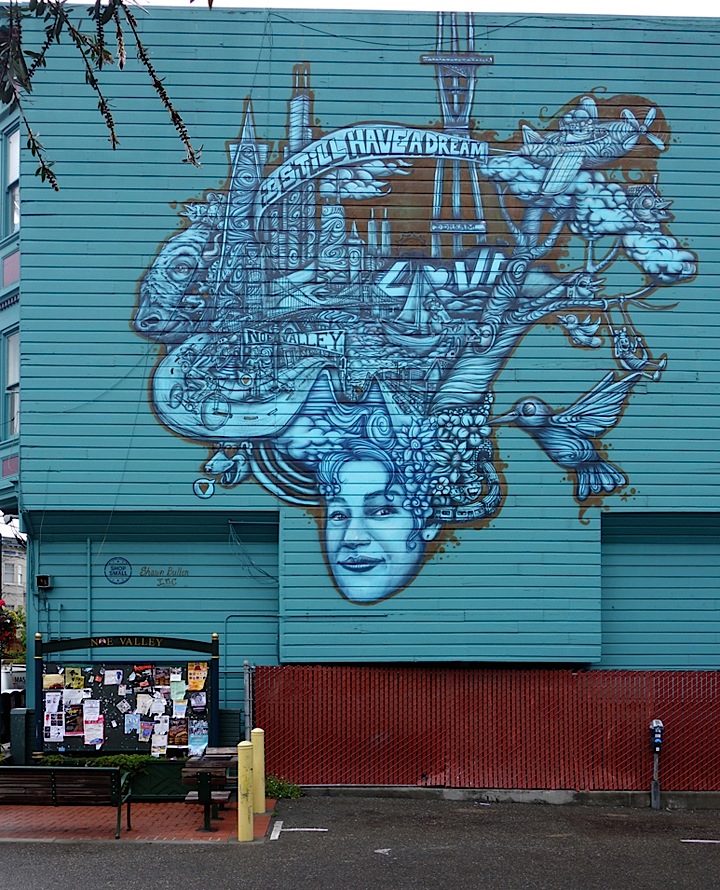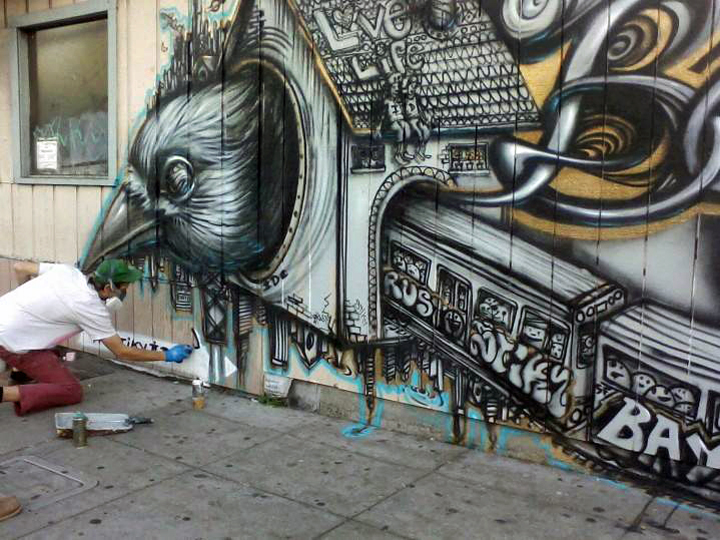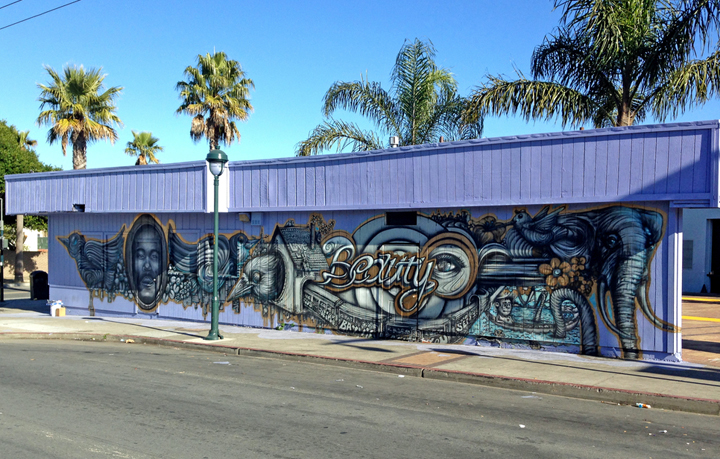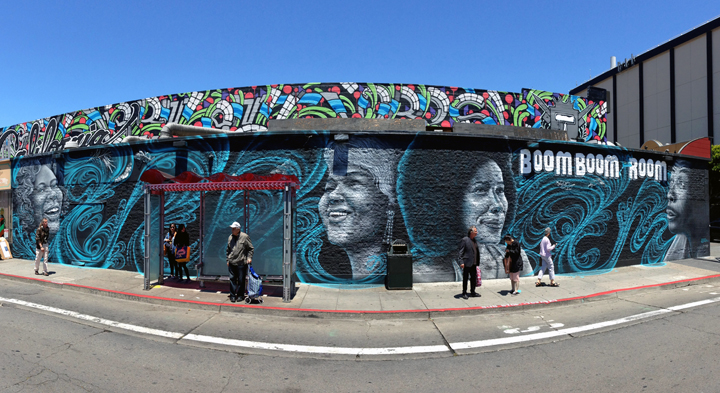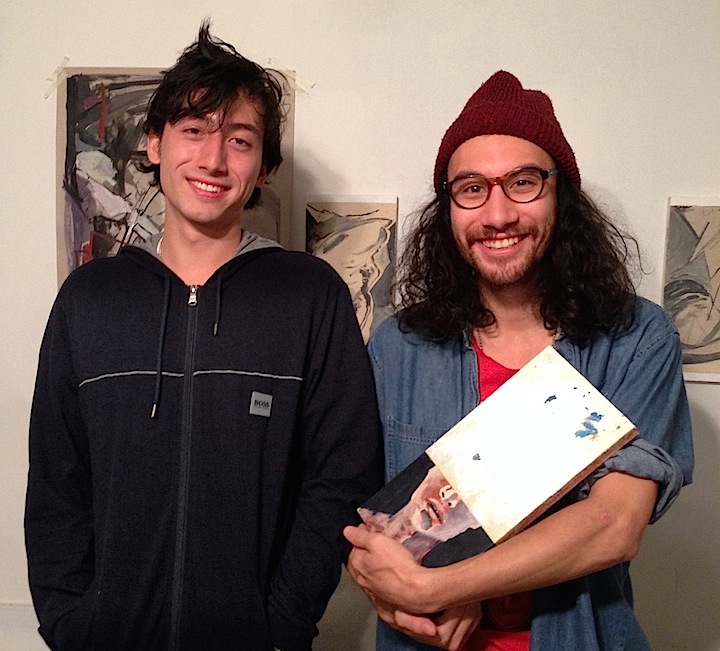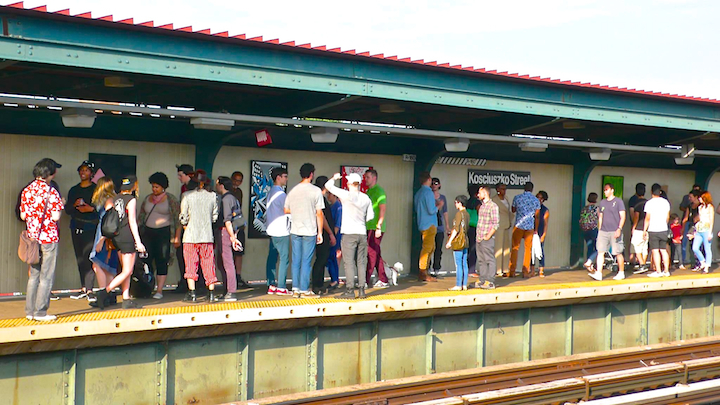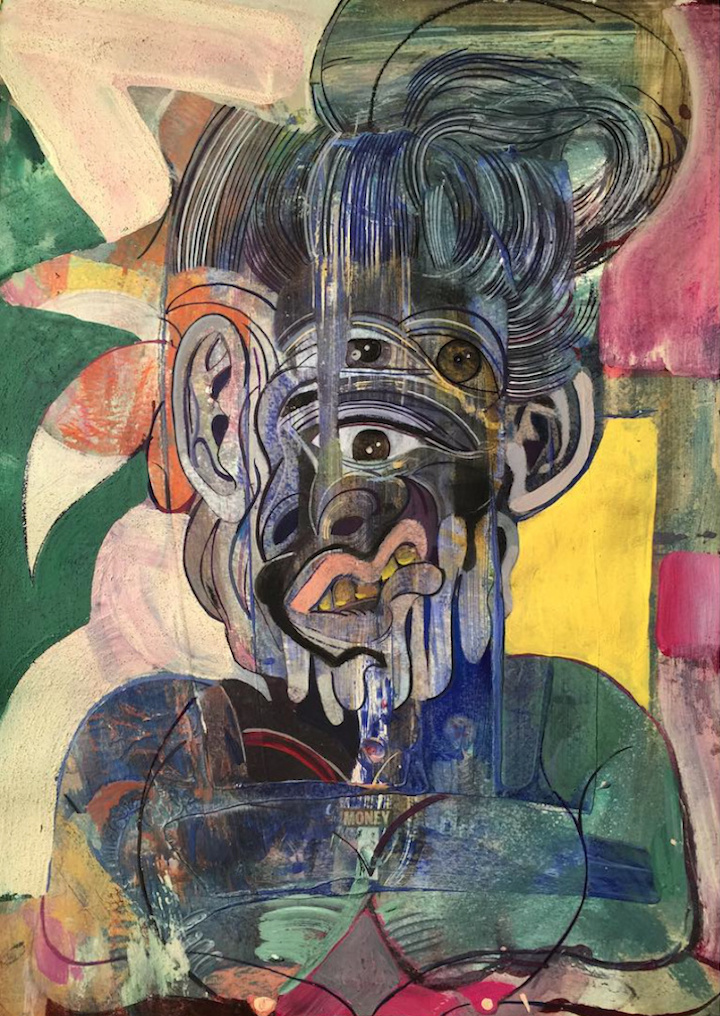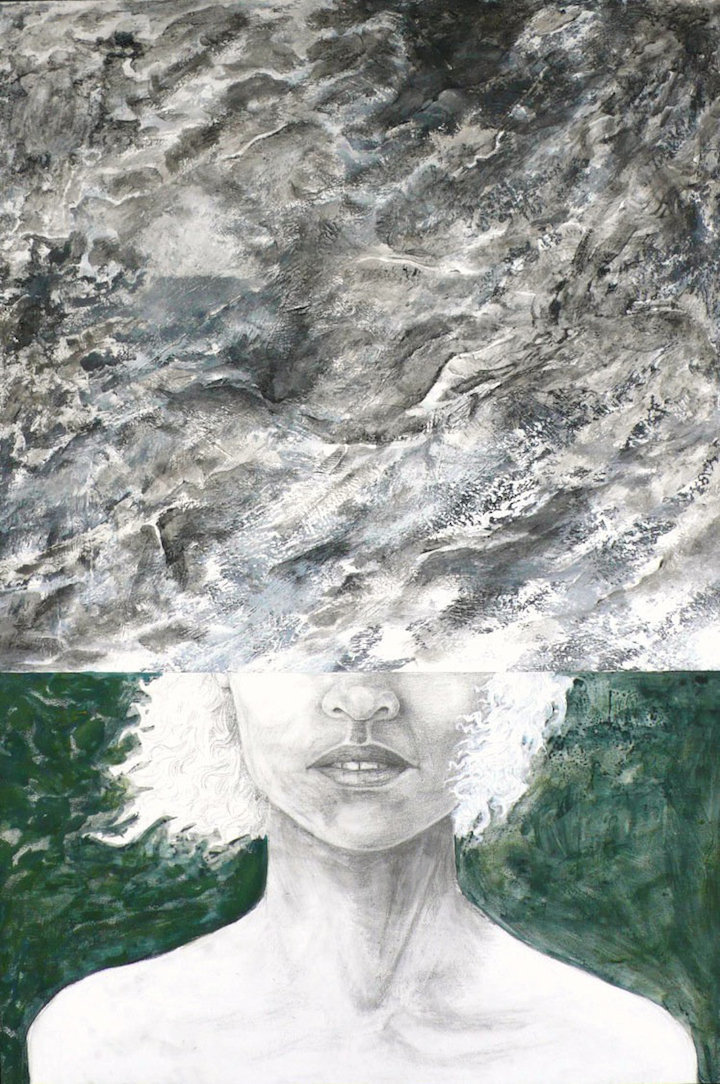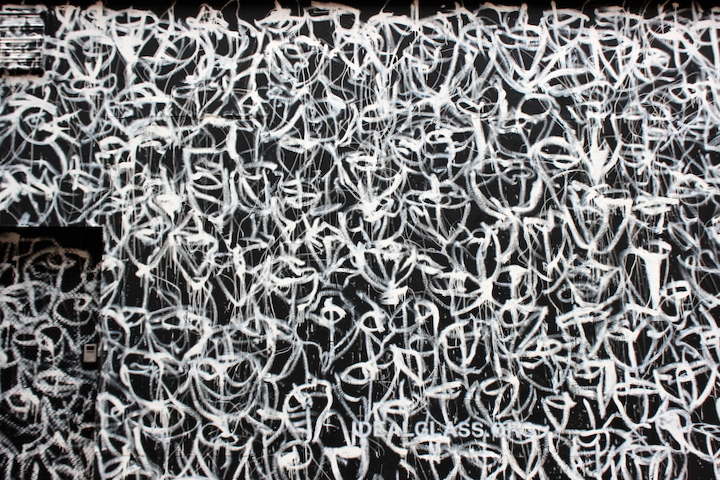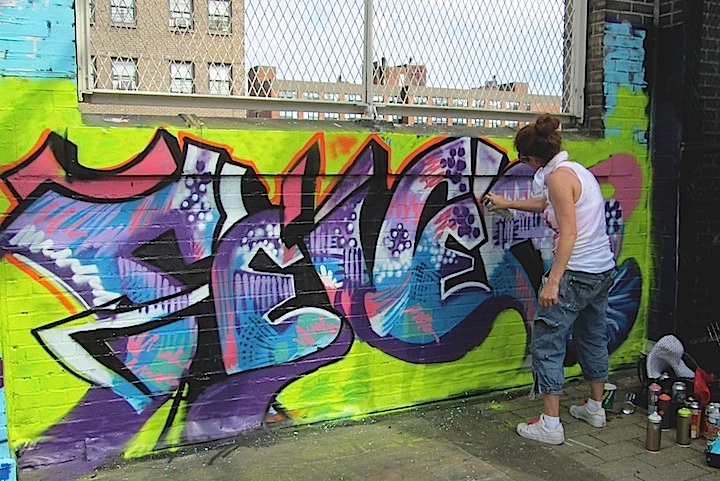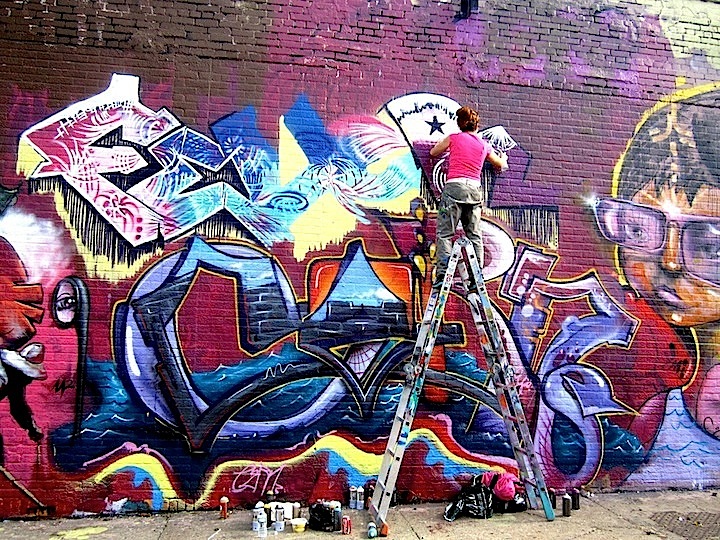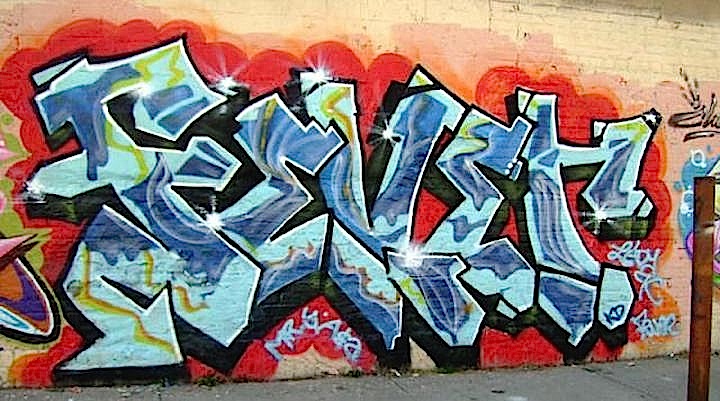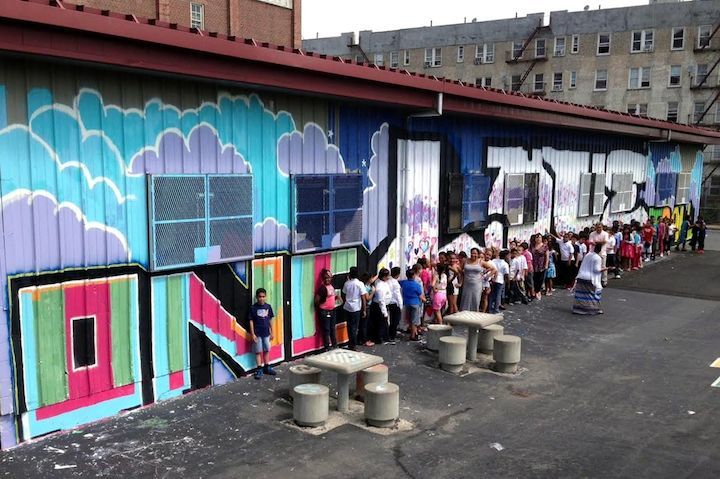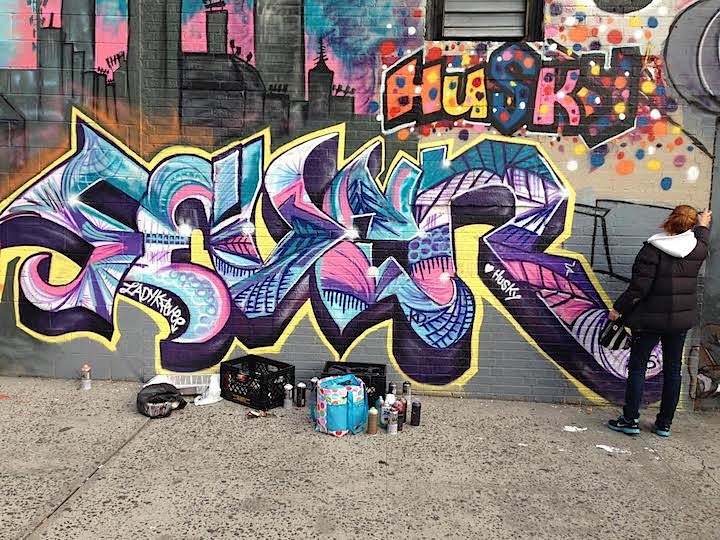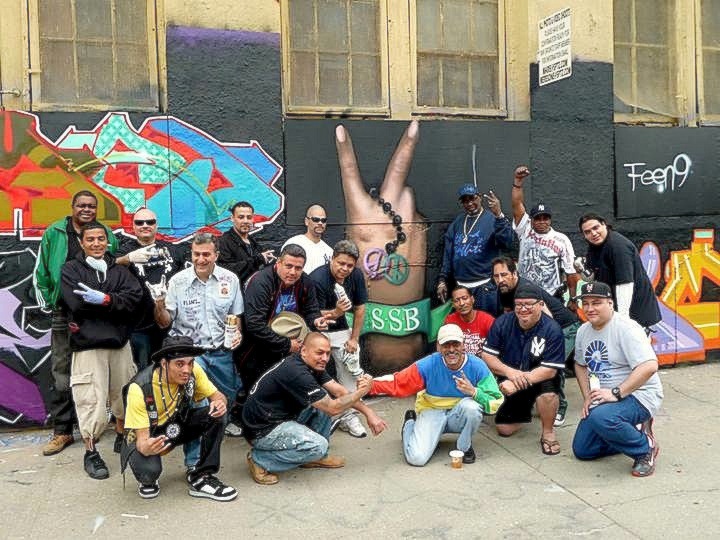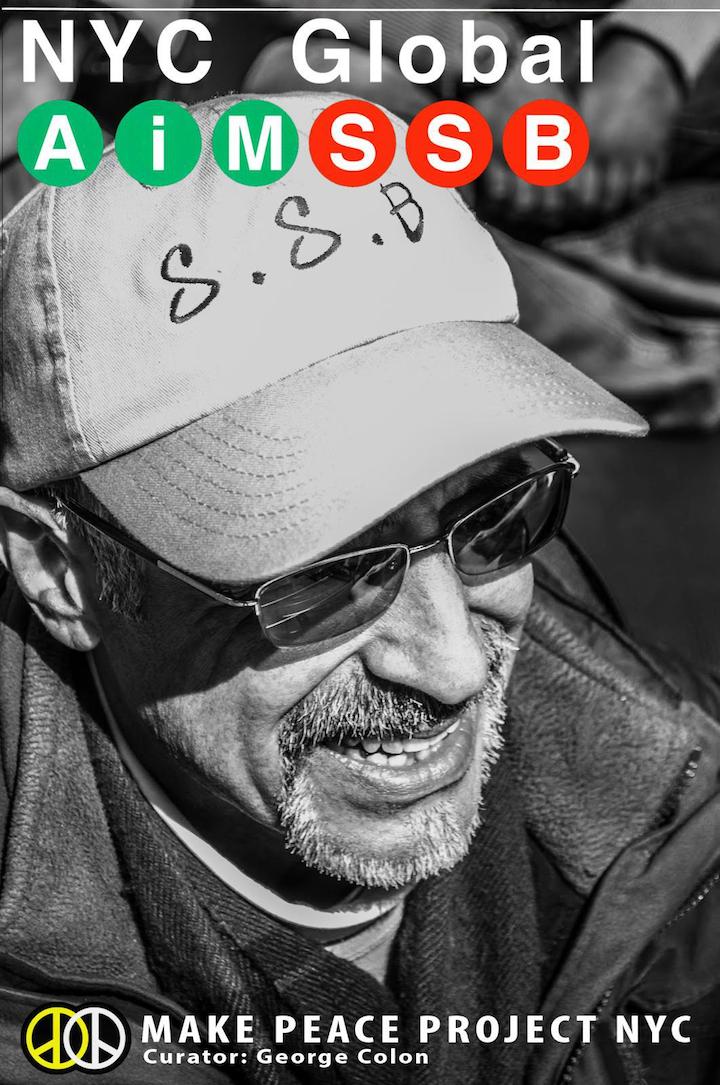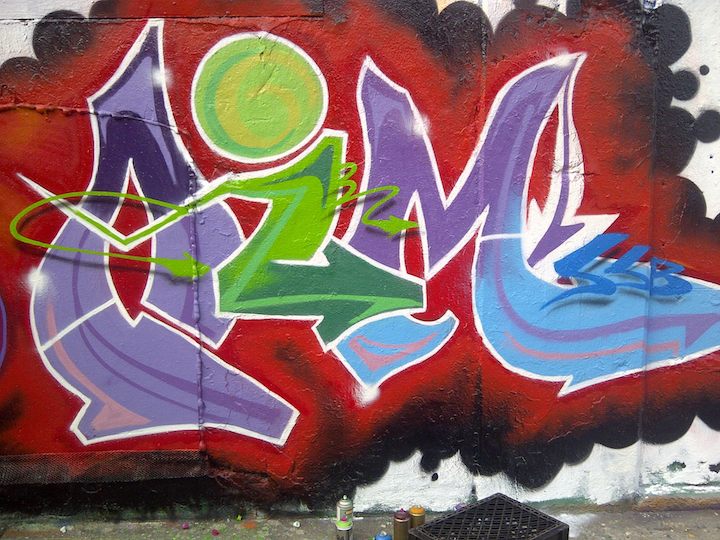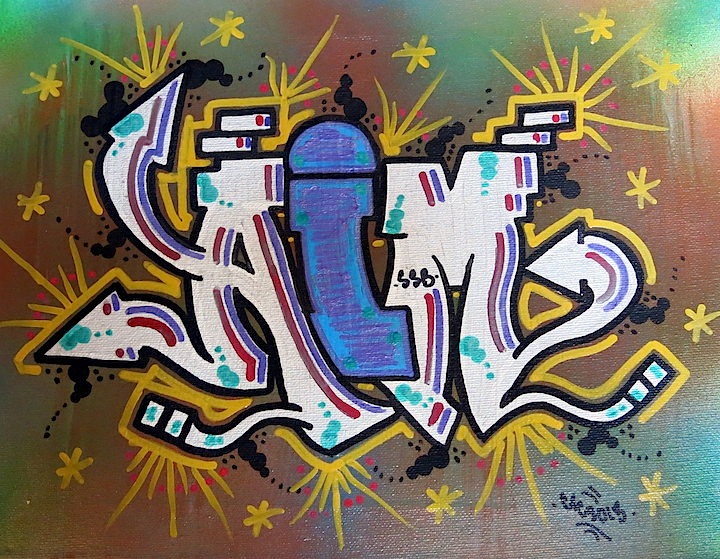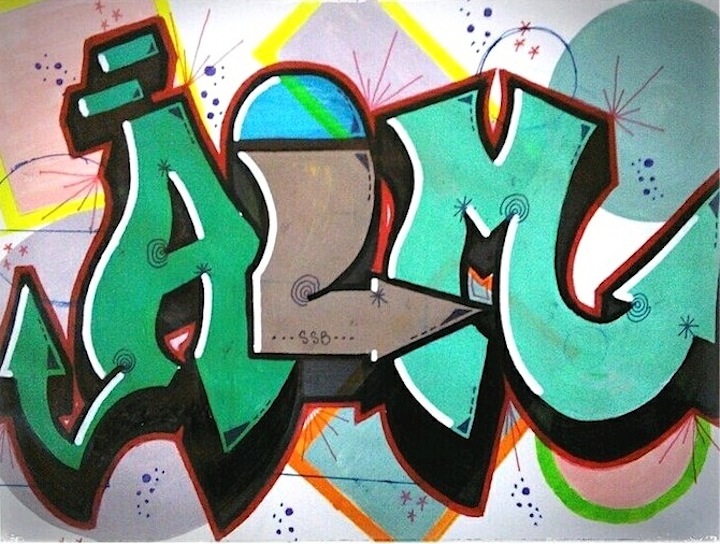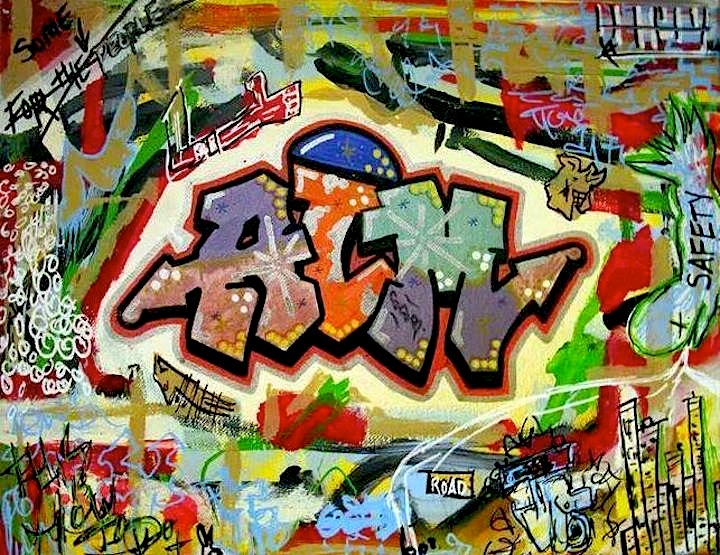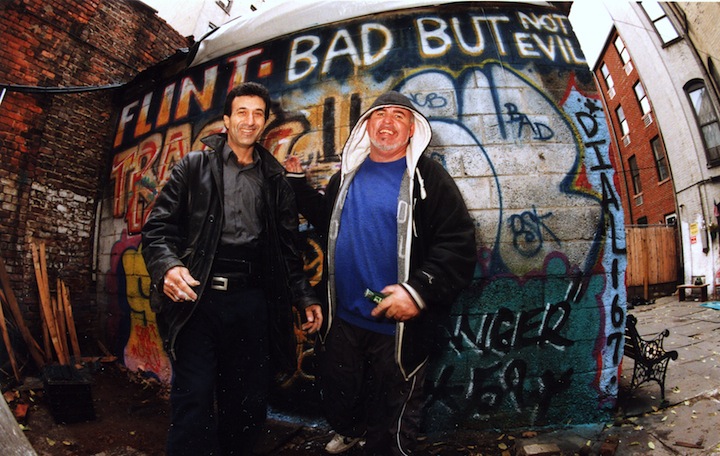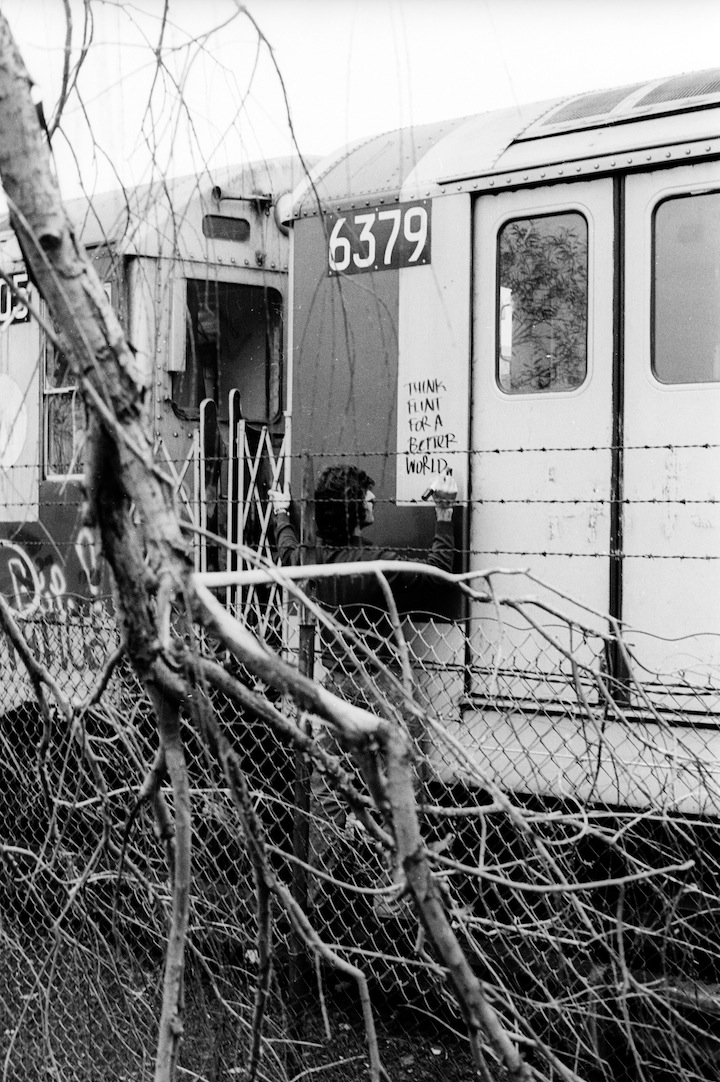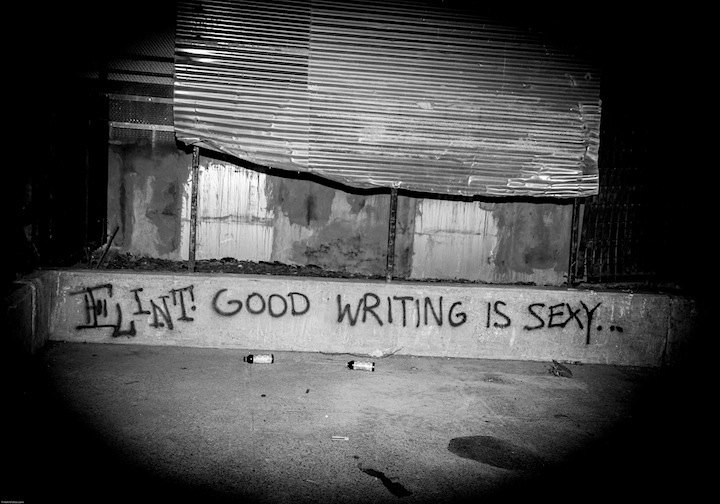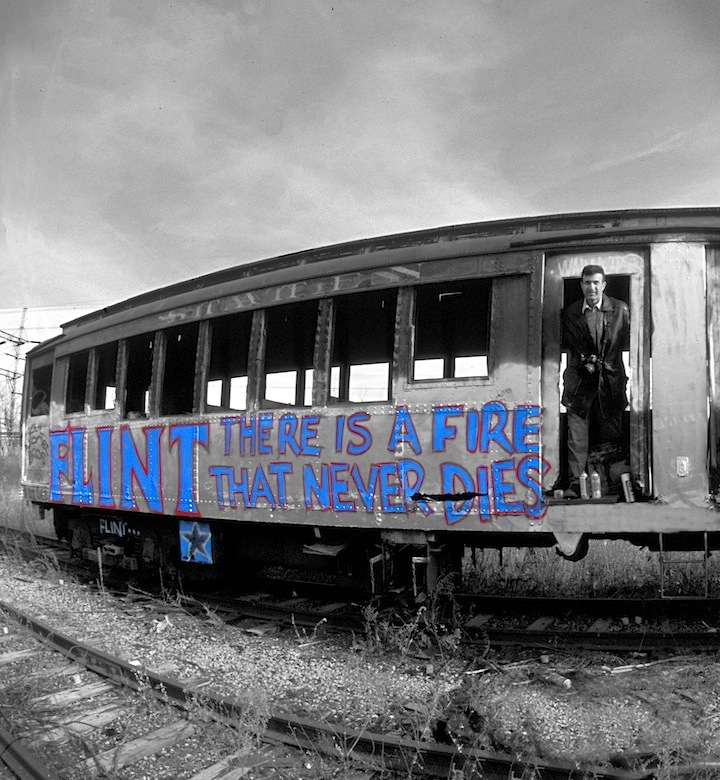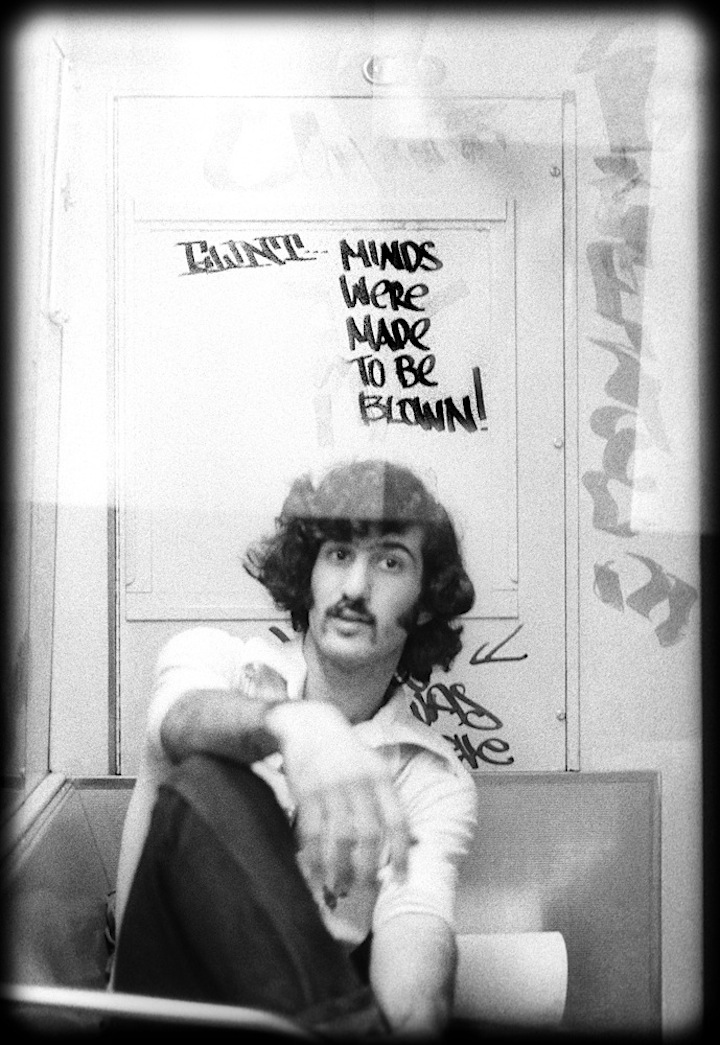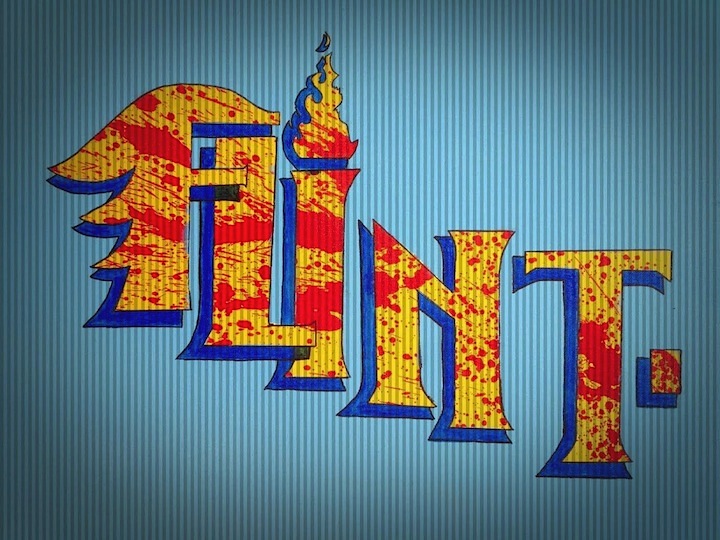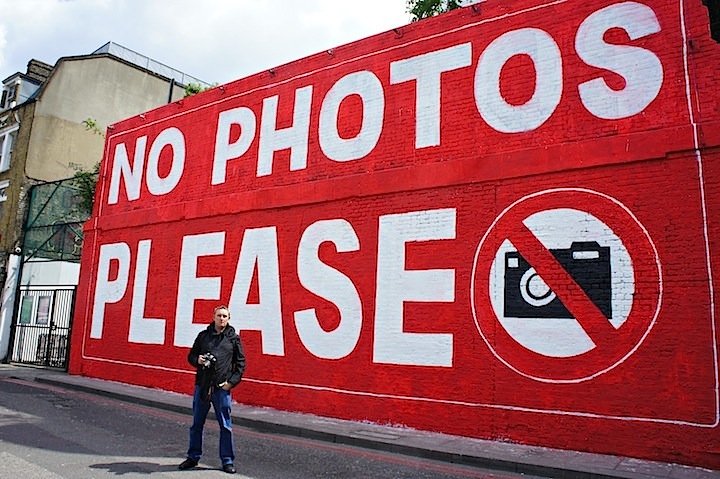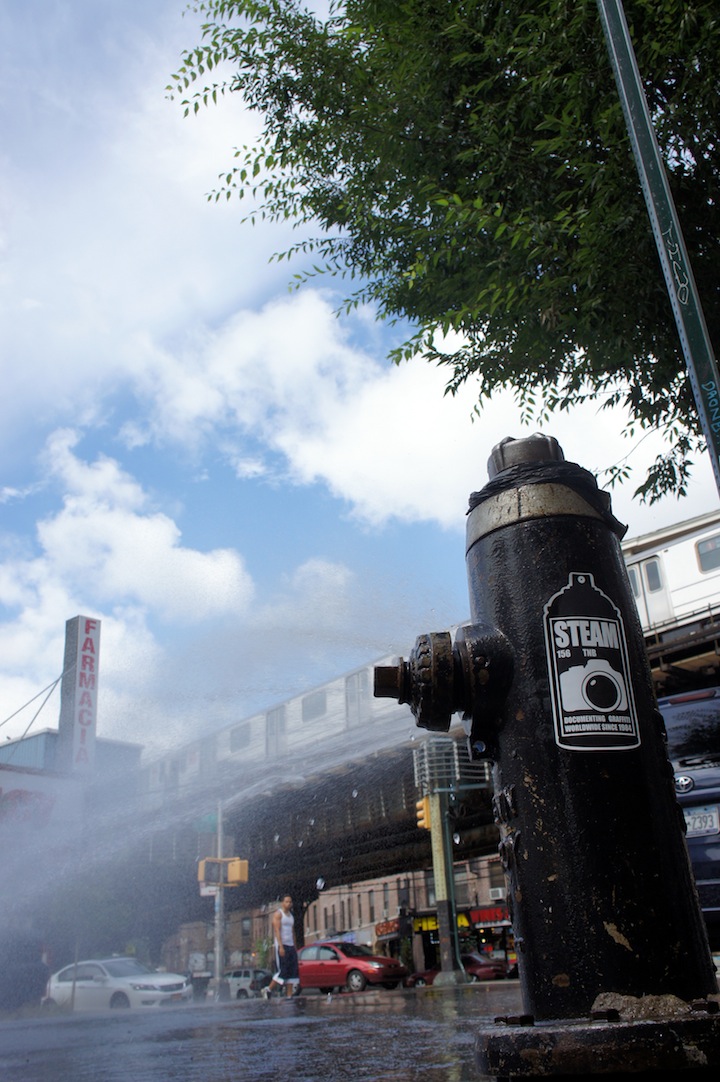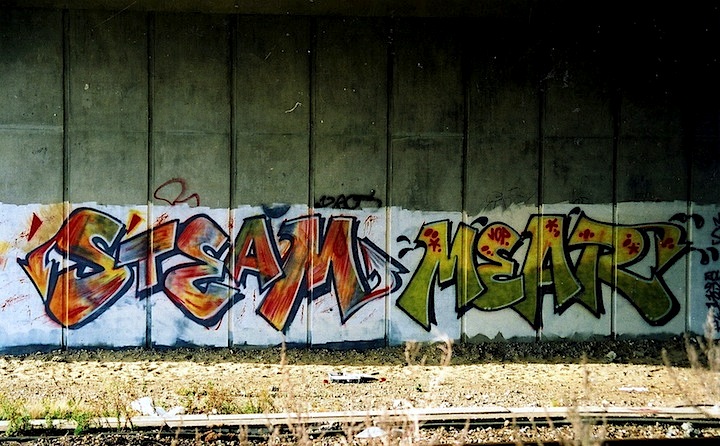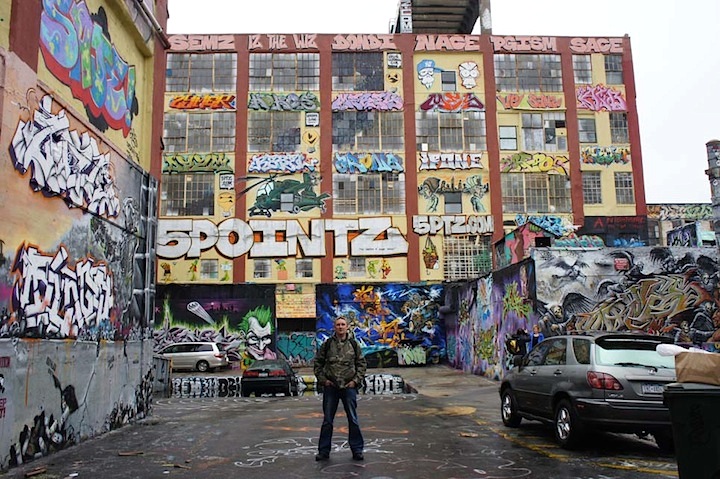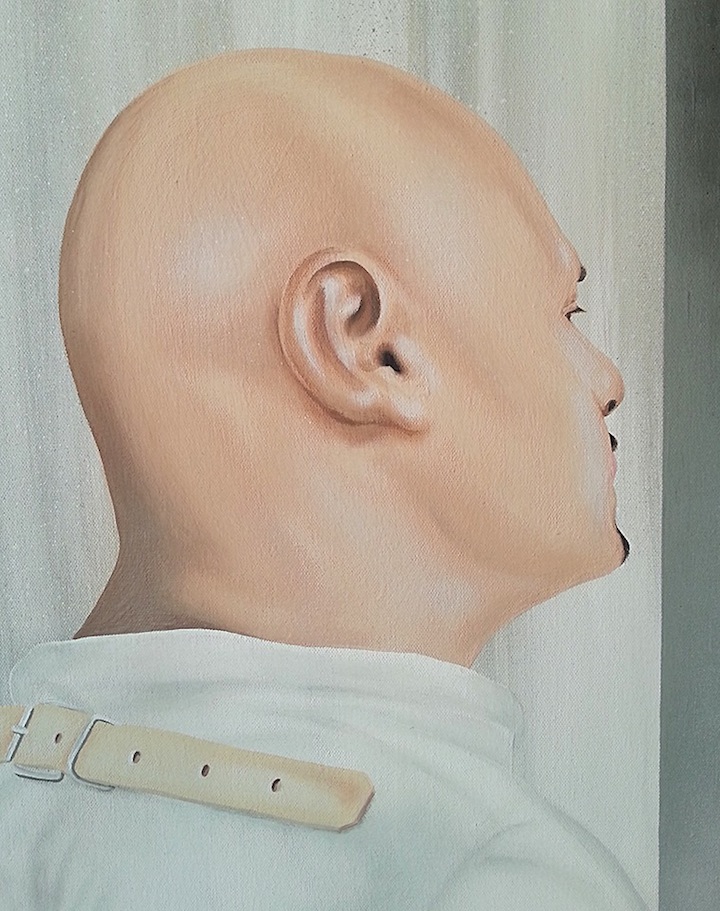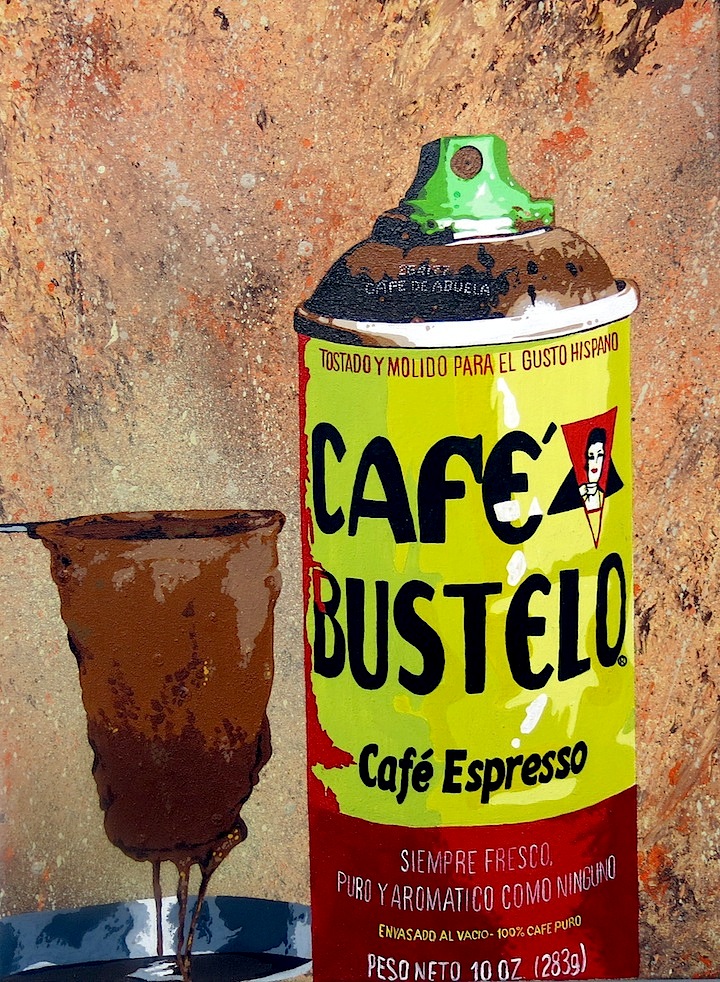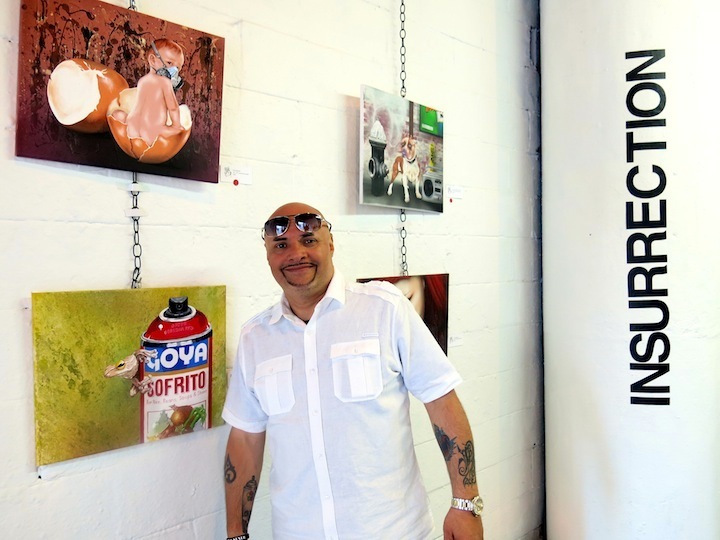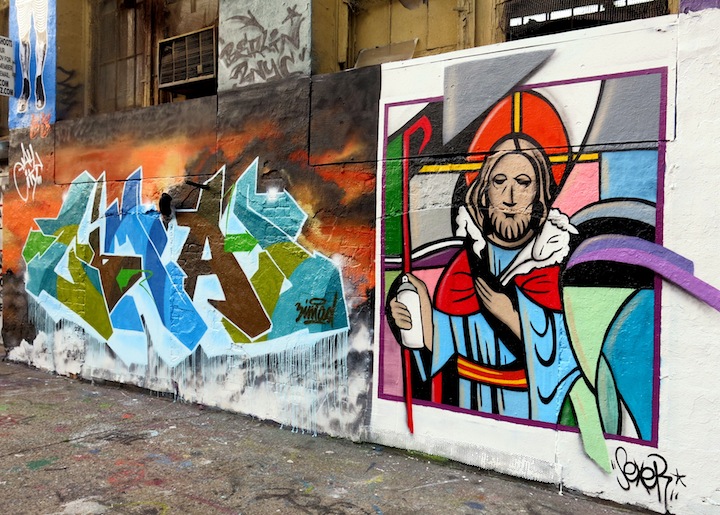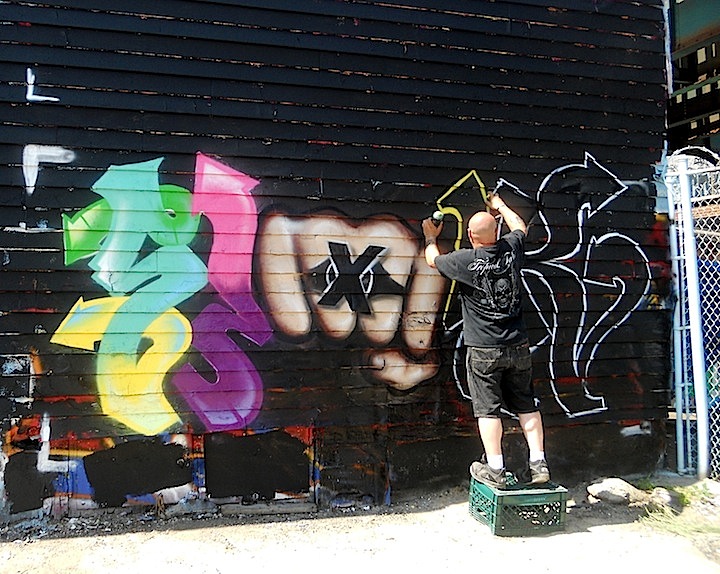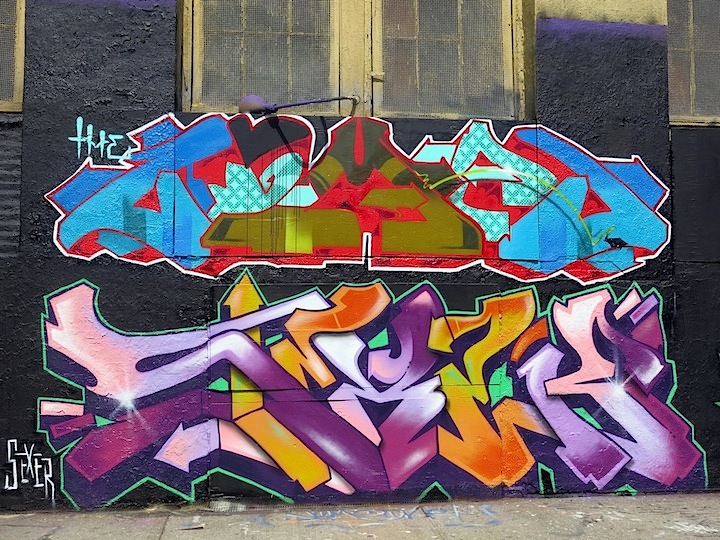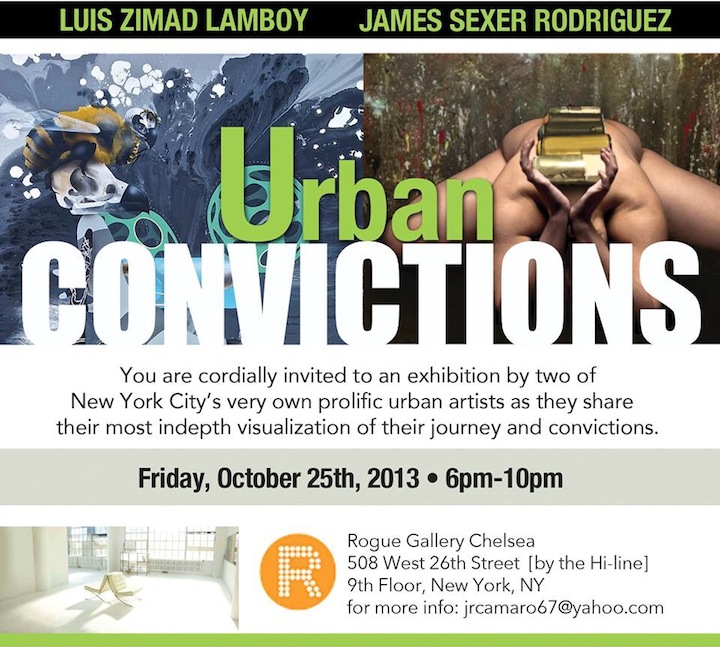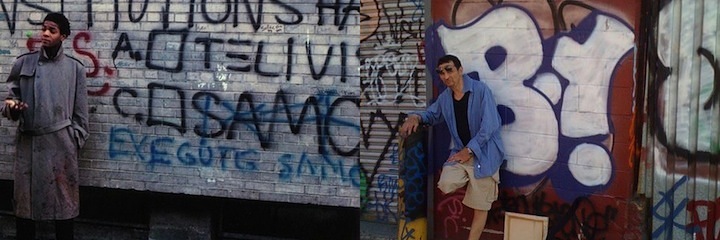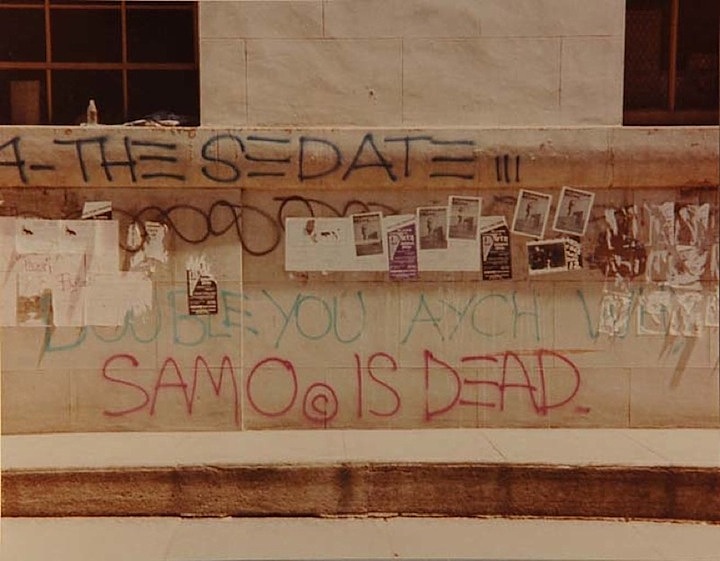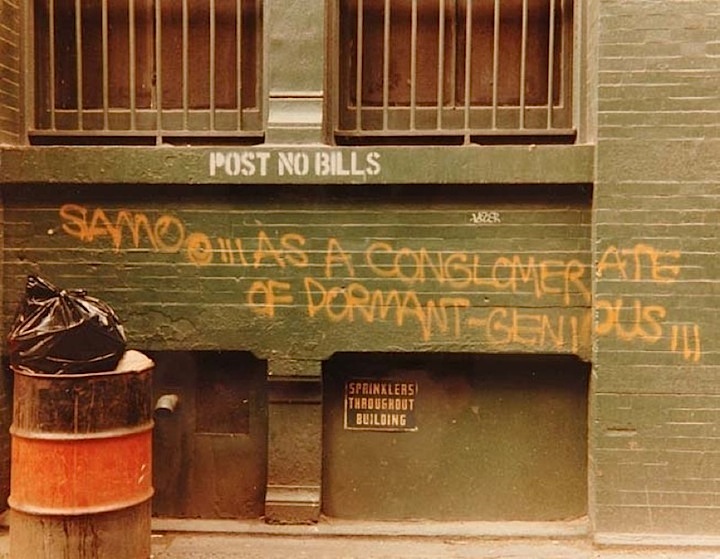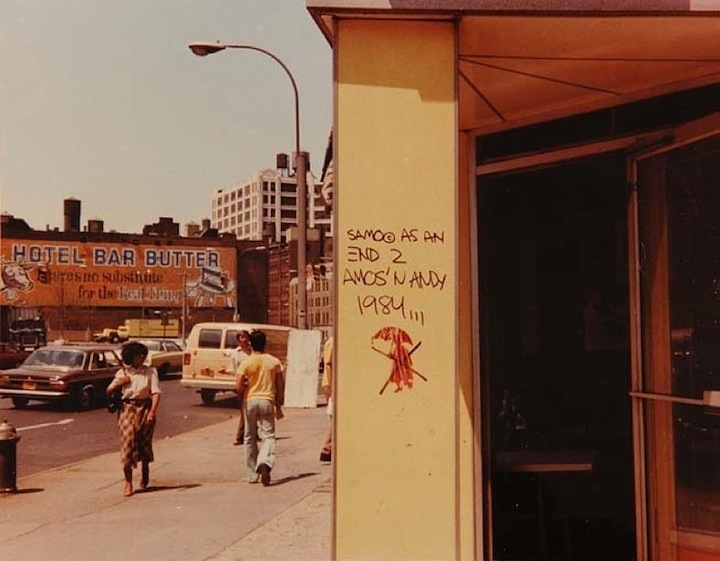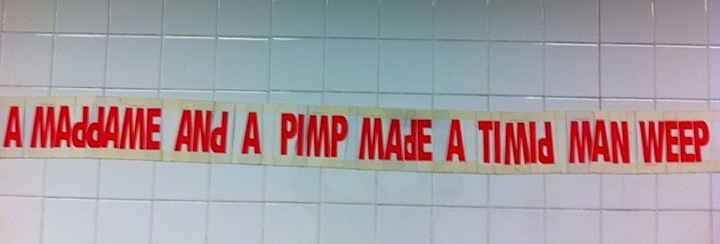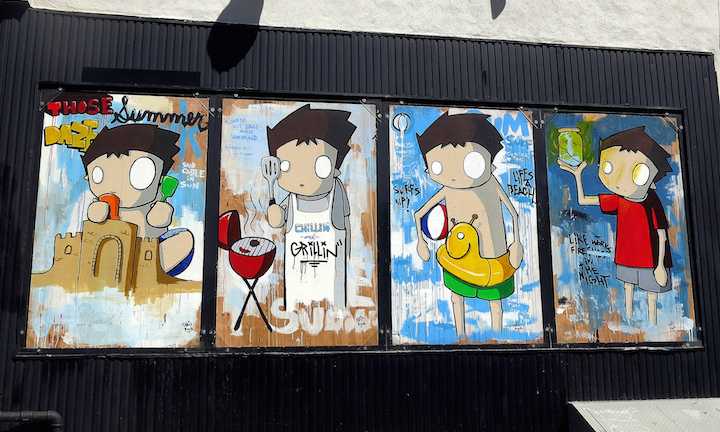
Founder of the much-loved Robots Will Kill, Staten Island-based artist Chris Rwk Chillemi’s creates delightful character-driven artworks that find a home on the streets, in galleries and — most recently — on WAT-AAH!‘s premium bottled drinking water. I was delighted to interview him.
When did it all begin? When did you first get into graffiti?
It was back in 1988 in Huguenot, Staten Island. I was 11. My brother and his friends started doing graffiti back then, and I would tag along and photograph it. About two years later, I began doodling on public surfaces.
We associate you with your hugely lovable, iconic characters. What was the inspiration behind them?
Letters didn’t hold my attention for all that long, as I’d always been so interested in cartoons and comics. I loved Gary Larson, Jim Davis and Disney stuff. Their styles were all different, but they all had really strong imagery and messages. My first illegal piece, in fact, was the wizard from Hagar the Horrible with a spray can doing a throw up! I can still remember the colors!
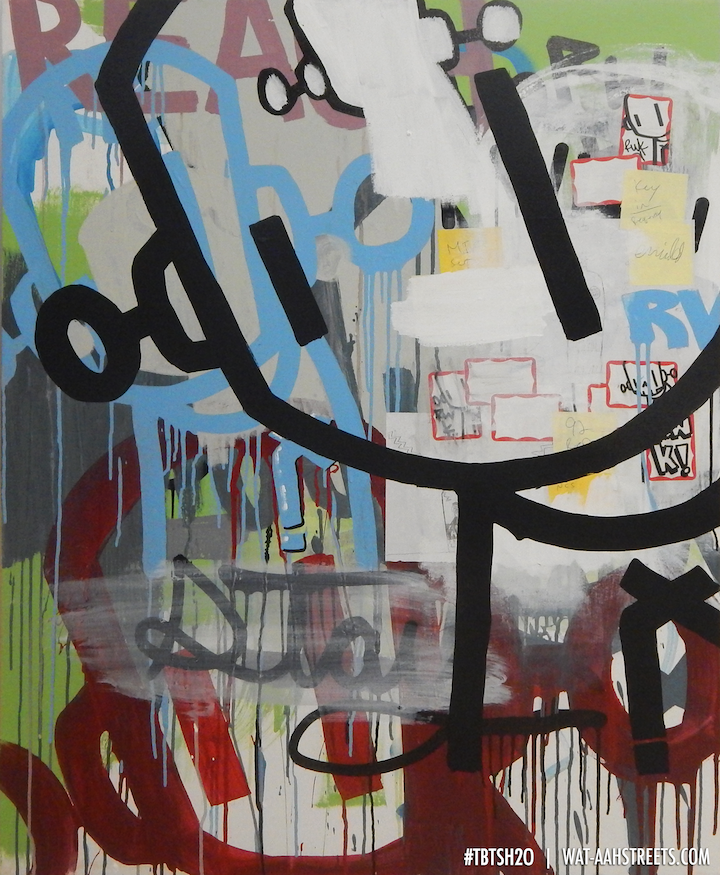
What about Robots Will Kill? Can you tell us something about its origin?
Back in 1999, while on a fellowship in Vermont, I came upon a friend, Chris Rini, painting a giant cellphone holding a man! That’s when I came up with the notion that “robots will kill.” If you do something too much and too often, it becomes robotic, and you lose your love for it.
Robots Will Kill – that began with you – has evolved into an informal global collective. Who are some of its members?
At first it was just me. Then Kevin and a bit later Veng joined. Since, we’ve collaborated with such artists as Peeta, ECB, Flying Fortress, JesseR. OverUnder and Mike Die.
Would you rather paint alone? Or do you prefer to collaborate with others?
I love both. In my studio, I’d rather work alone. But I love painting with others outdoors as it pushes me to another level.
Any thoughts about illegal vs. legal graffiti?
Ideally — what begins illegally evolves into something legal.
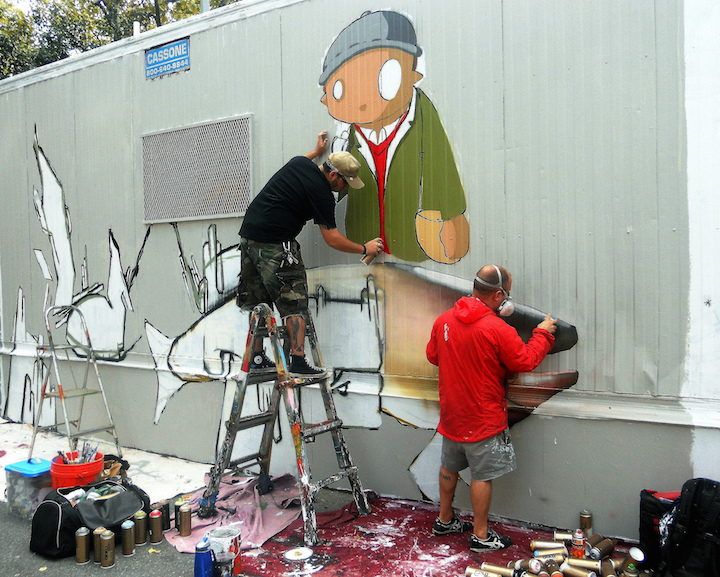
You’ve exhibited your work in dozens of galleries. How do you feel about showing in formal settings?
It’s great. There are lots of folks who would never notice my work on the streets. But when it’s in a gallery, they will have to pay attention to it.
What about the graffiti/street art divide? You seem to successfully straddle both.
Street artists need to respect graffiti writers. They don’t always do. They need to learn the history.
What about the corporate world? How do you feel about sharing your talents with private comporations?
Things aren’t black and white anymore. It’s not a matter of us vs. them. I don’t mind working for a corporation, so long as it’s an ethical one. The corporate world makes money. Why shouldn’t we artists benefit from it?
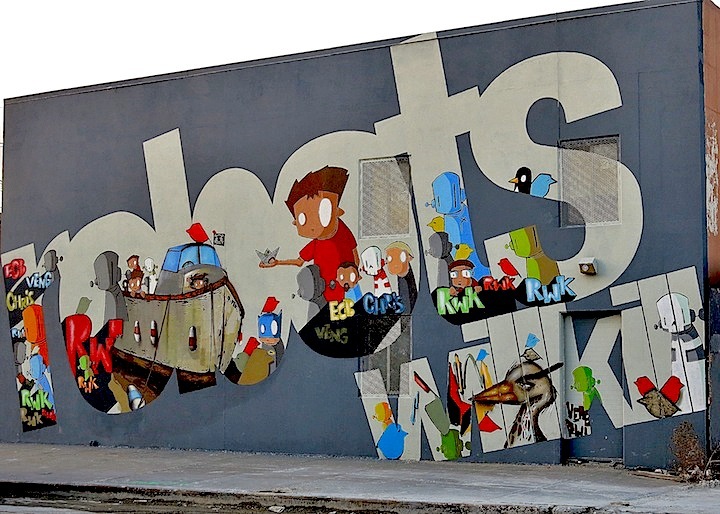
What is the riskiest thing you’ve ever done?
I play it safe. I’m not a risk-taker. When I was in high school, my tag was ND – No Drugs…Never Drunk…Never Dull! I’ve been straight edge my whole life.
How does your family feel about what you were doing?
My family has always been supportive. When I was a kid, they built a wall in my backyard, so I could practice!
You have a 9-5 day job here in Manhattan and you live in Staten Island. How do you manage to find time to do so much great art?
My weekday schedule is tough. I have to wake up at 6am to leave my house at 7, and I’m often not back home until 7 in the evening. I then have to help my son with his homework. I generally don’t begin working on my art until 10pm, and I don’t get to sleep until 2-3am.
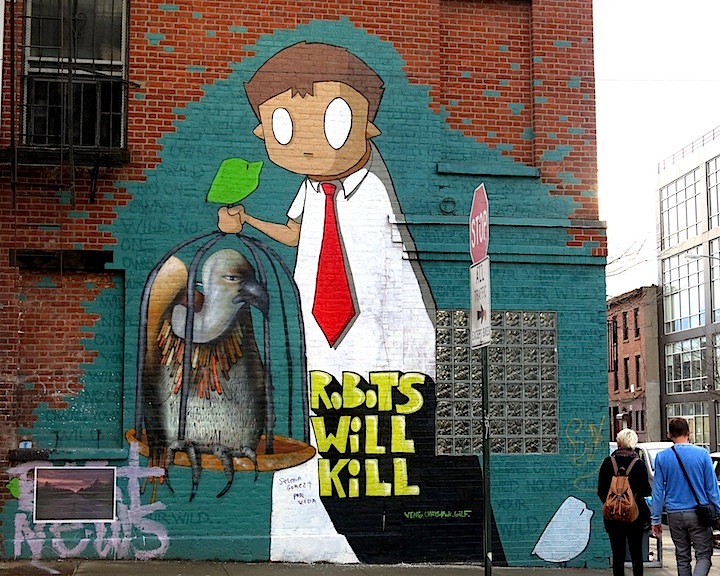
Wow! That is a rough schedule. When you work, do you sketch first or do you just let it flow?
About 70% of the time, I work from a sketch.
Are you generally satisfied with your finished piece?
Yes – but my satisfaction is increased when I get a positive response to it from others.
Have you any ideal work environment?
I need background noise, so that I don’t overly think about what I’m doing!
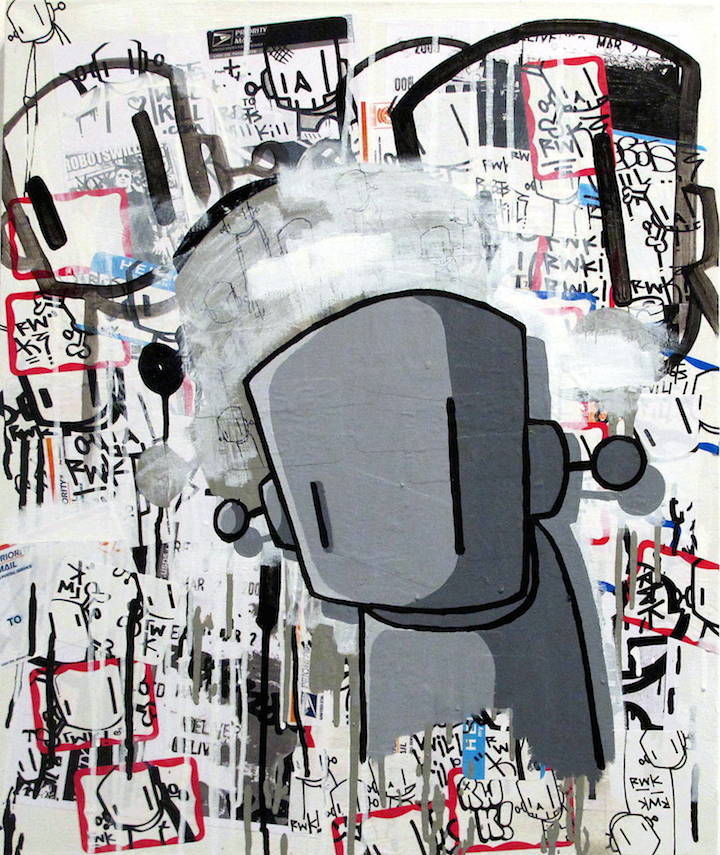
Do you have a formal art education?
I earned my Associate degree at FIT and a BFA in painting from Hunter College.
Do you feel that you benefited from it?
Definitely, as so many elements – from choice of colors to spatial design — are involved in creating a first-rate piece.
Are there any particular cultures that have influenced your aesthetic?
The comic book culture, the sci-fi one and the graffiti culture. I’ve also been inspired by hot-rods and the urban culture, in general.
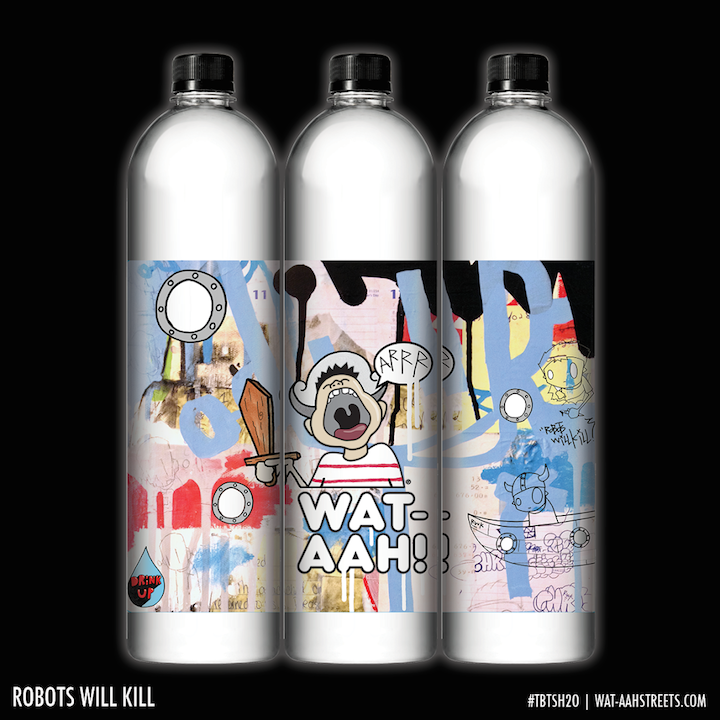
What is the source of your inspiration these days?
I’d say my family, my friends and my personal experiences.
How has your work evolved in the past few years?
It’s become more personal. My use of layers and colors has become more important to me. And when I paint, I tend to take my audience into consideration more than I used to.
How do you feel about the role of the Internet in all this?
I think it’s amazing that something I do here can be seen minutes later by someone in Australia. But I also think we’ve been oversaturated with blogs and Instagram.
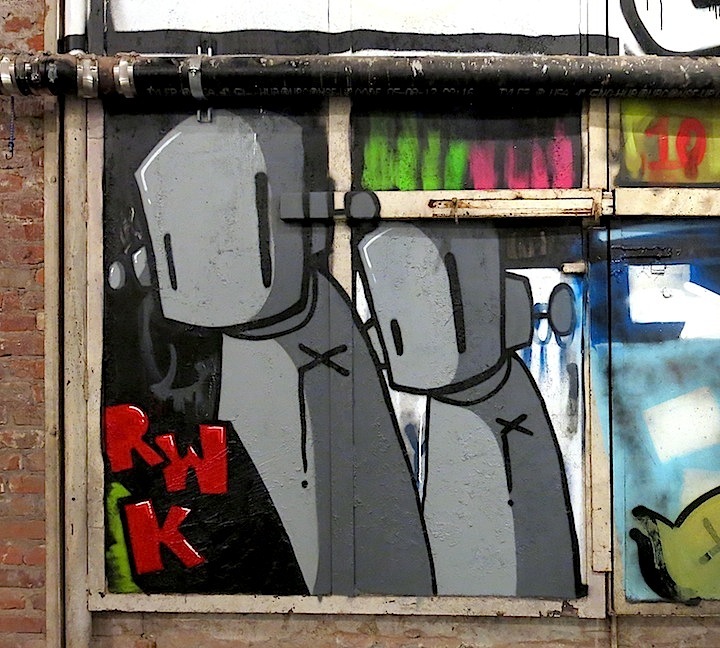
Have you any feelings about the photographers/bloggers in the scene?
On the positive side, they help get artists known. But I don’t think much thought goes into much of what makes its way out there.
What do you see as the role of the artist in society?
He’s a muse for the general public. Without art, there’d be a lot less for folks to see, feel, think about and talk about.
What do you see as the future of street art and graffiti?
There’s too much going on right now, and too many people trying to get into the game. And so it is likely to fizzle out. But those who are true will survive its fallout. And what will emerge will be even stronger.
What about you? What’s ahead for you?
I will continue to do what I do. Create, paint and get my stickers out there!
Note: Chris will be a featured artist of WAT-AAH!’s upcoming exhibit in Chicago on July 18-20 as part of WAT-AAH! Taking Back the Streets art campaign, which connects today’s leading street artists with the brand’s mission to fight childhood obesity and promote healthy hydration among kids and teens. Joining the likes of Kenny Scharf, Swoon, Shepard Fairey, Haze and Chicago-based POSE, Chris has created a one-of-a kind WAT-AAH! label design featuring PHA’s “Drink Up” drop, as well as an original piece of art (shown above) that becomes featured in the brand’s traveling art campaign, which has been touring the country since its launch in NYC this past February. For more information, visit wat-aahstreets.com and follow @wataahstreets.
Interview conducted and edited by Lois Stavsky; photos: 1. and 8. Dani Reyes Mozeson; 2. Original artwork created for WAT-AAH! Taking Back the Streets art Campaign. Chris RWK. I Tried to Stop. 36″x48″. Mixed media. Image courtesy WAT-AAH! 3. With Veng, Tara Murray; 4. – 6. Lois Stavsky 7. Limited edition bottle design for WAT-AAH! Taking Back the Streets art campaign. Image courtesy WAT-AAH!
